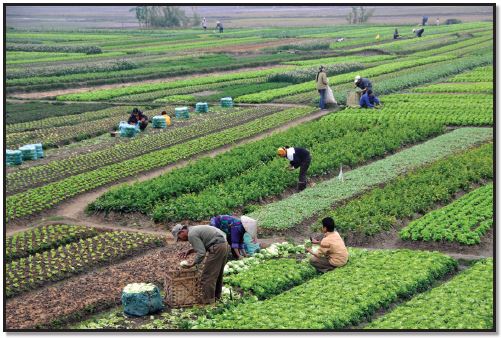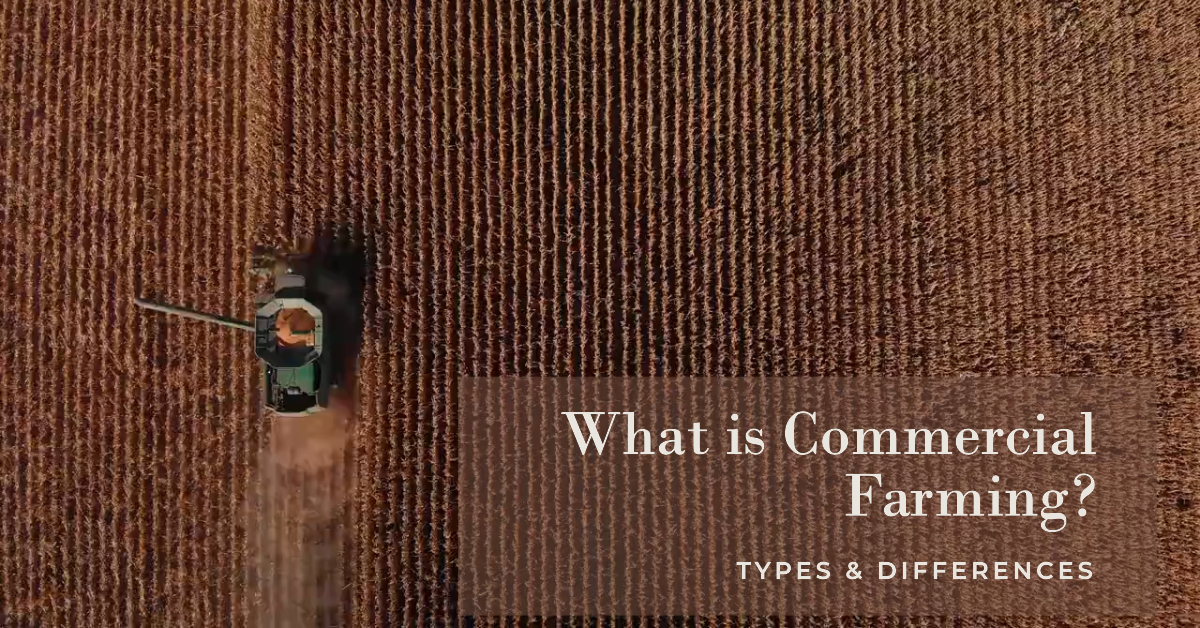An In-Depth Check Out the Difficulties and Advantages of Modern Farming
Modern agriculture stands at the crossroads of technology and sustainability, providing a wide variety of challenges and possibilities. The path ahead requires a mindful examination of these characteristics, inviting stakeholders to consider the possibility for transformative modification in agricultural practices and policies.
Technical Advancements in Farming
Technical developments in farming have revolutionized the farming field, driving raised efficiency and effectiveness. Innovations such as accuracy agriculture, automation, and biotechnology have actually changed standard farming methods, enabling even more lasting and profitable procedures. Precision farming uses GPS technology, sensors, and data analytics to enhance field-level monitoring regarding crop farming. This strategy allows farmers to use inputs like water, plant foods, and chemicals a lot more deliberately, minimizing waste and decreasing prices while improving yields.
Automation in farming has additionally driven the industry onward, with the intro of independent tractors, drones, and robotics. These innovations minimize labor needs and enhance functional rate, permitting timely planting and harvesting. Drones, particularly, give useful airborne imagery and information, assisting farmers in checking plant health and detecting issues early.
Biotechnology has actually likewise played an essential role in progressing farming methods. Collectively, these technological improvements have laid the foundation for a more resistant and lasting farming future.
Ecological Challenges
Agriculture faces numerous ecological obstacles that threaten its sustainability and efficiency. One of the key issues is the degradation of soil health because of intensive farming methods that deplete important nutrients and cause disintegration. The overuse of chemical fertilizers and pesticides further aggravates this problem, polluting water sources and lowering biodiversity. The long-term stability of farming land is jeopardized, necessitating the adoption of more lasting techniques.
Water shortage is one more substantial challenge, particularly in regions where agriculture heavily counts on irrigation. Climate change is intensifying this problem, altering rainfall patterns and increasing the frequency of droughts. Effective water monitoring systems, such as drip watering and rain harvesting, are important to minimize these impacts, however their execution stays irregular throughout different areas.
In addition, agriculture is both a factor and a victim to climate change. It represents a considerable share of greenhouse gas exhausts, mainly from livestock manufacturing and rice farming. Transitioning to low-emission agricultural methods, such as precision farming and agroforestry, can assist decrease this effect. However, these methods require considerable financial investment and technical experience, positioning an obstacle to widespread adoption. Resolving these environmental obstacles is essential for making sure a sustainable agricultural future.

Economic Effects
The economic impacts of contemporary farming are extensive and multifaceted, affecting both regional and worldwide markets. Breakthroughs in innovation and manufacturing approaches have substantially enhanced agricultural efficiency, bring about much more efficient food supply chains and lowered prices for consumers. This increased efficiency has enabled nations to meet growing demands, maintain food costs, and add to financial development. The export of farming commodities has actually ended up being a considerable resource of revenue for several countries, playing an essential duty in their financial advancement.
The capital-intensive nature of contemporary farming calls for significant financial investment in equipment, plant foods, and genetically customized seeds, which can be financially troublesome for small-scale farmers. Furthermore, international market changes can affect the profitability of farming exports, making economic situations reliant on agriculture vulnerable to economic instability.
Moreover, aids and trade policies in developed countries can misshape market rates, impacting affordable balance and possibly disadvantaging farmers in establishing countries. Generally, while modern farming drives economic development, it also requires navigating complicated financial landscapes to make sure lasting and equitable growth.
Social Implications
While contemporary farming has caused considerable developments, it also offers different social implications that call for factor to consider. One significant problem is the variation of small farmers because of the rise of big agribusinesses. As company farming entities progressively dominate the agricultural landscape, smaller farms usually struggle to complete, bring about the disintegration of rural why not try here neighborhoods and standard farming practices. This change can result in a loss of regional understanding and cultural heritage that smaller sized farms maintain.

Such methods could also limit consumer options and minimize the ability of neighborhood neighborhoods to regulate their food sources. As these social effects unravel, it ends up being vital to resolve them to ensure lasting and equitable farming growth.
Future Directions
Looking ahead, numerous encouraging opportunities for modern farming might deal with the difficulties encountered today while fostering sustainable growth. Advances in technology, such as accuracy farming, use the possible to maximize resource usage and rise efficiency.
Biotechnology additionally holds tremendous promise for the future of farming. Genetically modified microorganisms (GMOs) and genetics editing and enhancing methods, like CRISPR, might improve crop strength versus environment modification, insects, and illness, hence boosting food safety and security. Additionally, branching out crop varieties to include more nutrient-dense and climate-resilient choices can bolster both environmental stability and human nutrition.

Verdict
Modern farming, identified by technical innovations, presents both obstacles and possibilities. commercial farming vs subsistence farming. Attending to these intricacies calls for a transition towards lasting practices that balance performance with ecological stewardship and social equity, thus making certain a durable future for worldwide farming systems.
Modern agriculture stands at the crossroads of technology and sustainability, presenting a wide range of chances look at this now and difficulties. In addition, worldwide market variations can influence the earnings of agricultural exports, making economic climates reliant on farming prone to financial instability.
In addition, the intensive use of modern technology and automation in farming has led to a reduction in agricultural employment possibilities.Looking ahead, several promising avenues for modern farming can resolve the challenges faced today while fostering sustainable development. commercial farming vs subsistence farming.Modern farming, defined by technical developments, presents both challenges visit their website and chances